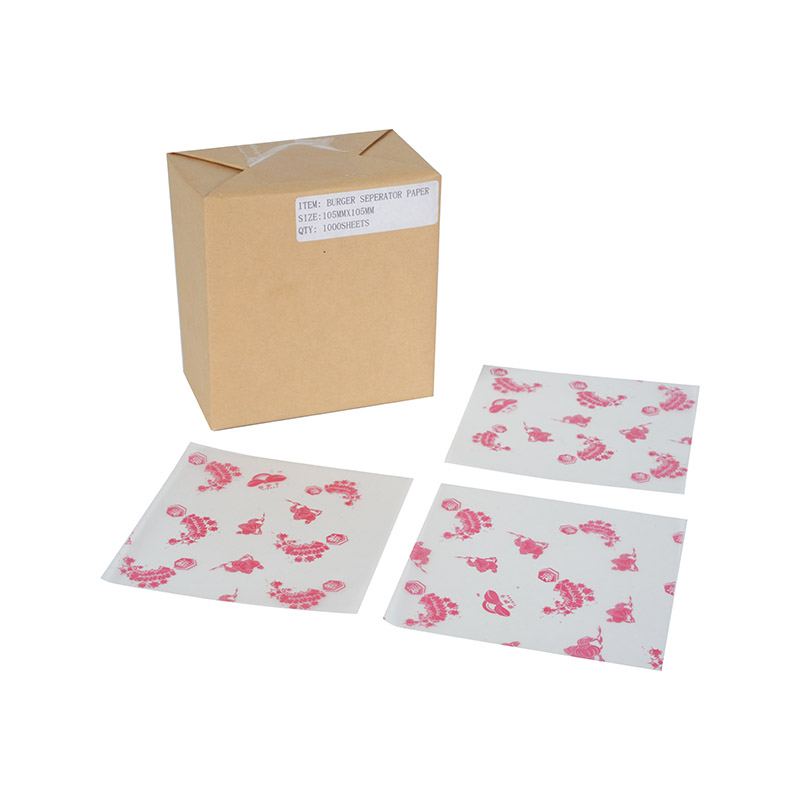The Packaging Conundrum: Necessity Meets Responsibility In the fast-paced world of grab-and-go meals, packaging is an unavoidable necessity. It protec...
READ MOREAll
Baking Paper
Greaseproof Paper
Wax Paper
Parchment Paper
Cooking Sheet Paper
Steaming Paper
Hamburger Wrap
Sandwich Wrap
Pan Liner
Candy Wrap
Air Fryer Paper

Brand Name: YISAKA Coating Material Wax Coating Side Single Side Compatible Printing Letterpress pri...

Brand Name: YISAKA Coating Material Wax Coating Side Single Side Compatible Printing Letterpress pri...

Brand Name: YISAKA Coating Material Wax Coating Side Single Side Compatible Printing Letterpress pri...
The Packaging Conundrum: Necessity Meets Responsibility In the fast-paced world of grab-and-go meals, packaging is an unavoidable necessity. It protec...
READ MOREHave you ever stopped to appreciate the simple sheet of paper that separates your juicy burger from your hands? It might seem trivial, but hamburger w...
READ MOREIn the fast-paced, high-stakes environment of a professional kitchen, every supply choice matters. From the quality of the ingredients to the efficien...
READ MOREIn the realm of professional and home kitchens alike, certain tools rise to the level of indispensable. Among these foundational items are parchment p...
READ MOREHow do wrappers ensure that candies do not stick to each other or to the packaging?
Wrappers play a crucial role in ensuring that candies do not stick to each other or to the packaging. Here are several methods and properties of wrappers that help achieve this:
Material Selection: Wrappers are often made from materials that have a naturally non-stick surface, such as certain types of plastic films or coated papers.
Coatings: Some wrappers have a thin layer of a non-stick coating applied to them, which can be a type of wax, silicone, or a special polymer designed to prevent adhesion.
Texture: The surface of the wrapper may be designed with a specific texture that reduces the contact area between the candy and the wrapper, minimizing the chance of sticking.
Moisture Barrier: Wrappers are designed to be moisture-resistant to prevent the absorption of moisture from the environment, which can cause candies to become sticky and adhere to each other or the wrapper.
Tight Sealing: Proper sealing of the candy wrap can create a barrier between candies, preventing them from touching and sticking together.
Individual Wrapping: Candies are often wrapped individually to prevent them from coming into direct contact with one another.
Temperature Control: Wrappers are designed to maintain the integrity of the candy at various temperatures, preventing melting or softening that could lead to sticking.
Anti-Tack Agents: Some wrappers may incorporate anti-tack agents into the material to reduce the stickiness of the surface.
Proper Storage: Wrappers are designed to protect candies during storage and transportation, ensuring that they remain in optimal conditions to prevent sticking.
Shape and Size: The shape and size of the wrapper can be tailored to fit the candy snugly, reducing the space where candies can move and stick together.
Glazing: In some cases, candies themselves are given a glaze or coating that helps them slide easily out of their wrappers.
Release Agents: During the manufacturing process, release agents may be applied to the candies or the wrappers to prevent them from sticking during packaging.
Packaging Design: The design of the packaging itself can include features that prevent candies from sticking, such as dividers or compartments.
By incorporating these features, wrappers effectively protect candies and ensure that they maintain their shape and quality, ready for consumption without the issue of sticking.
What technology is generally used to print candy wrap?
The technology used to print candy wrappers typically involves a combination of printing techniques and materials designed to meet the specific needs of the confectionery industry. Here are some of the most common technologies and methods used:
Flexographic Printing: This is a widely used method for printing on flexible substrates like plastic films, which are commonly used for candy wrappers. Flexographic printing uses flexible relief plates and can print in multiple colors.
Gravure Printing: Also known as rotogravure, this high-speed printing process is ideal for long runs and produces very fine detail. It's often used for printing on plastic films and laminates with a high-quality finish.
Offset Lithography: While not as common for flexible packaging due to the nature of the substrates, offset lithography can be used for printing on certain types of paper-based wrappers.
Digital Printing: With advancements in digital printing technology, this method is becoming more popular for short runs, personalized packaging, and quick turnaround times. Digital printing can be done on a variety of substrates.
Thermochromic Inks: Some candy wrappers use special inks that change color with temperature, adding a fun and interactive element to the packaging.
Scented and Flavored Inks: To enhance the sensory experience, some wrappers are printed with inks that release scents or flavors when the packaging is handled.
Metallization: A process that applies a thin layer of metal (usually aluminum) to the wrapper, giving it a shiny, reflective appearance that can make the packaging more attractive.
Lamination: Multiple layers of different materials can be laminated together to create a wrapper with specific properties, such as barrier properties, strength, or heat resistance.
Embossing and Debossing: These techniques create a three-dimensional effect on the wrapper, adding a tactile element to the packaging.
Cold Foil Stamping: This process applies a thin layer of metal foil to the wrapper without the need for heat or pressure, which can be beneficial for certain types of substrates.
UV Coating: A clear, protective coating that can be applied to the printed wrapper to enhance glossiness, durability, and resistance to scuffing and fingerprints.
The choice of printing technology and techniques depends on factors such as the type of wrapper material, the desired visual effects, production volume, and the specific requirements of the candy manufacturer.